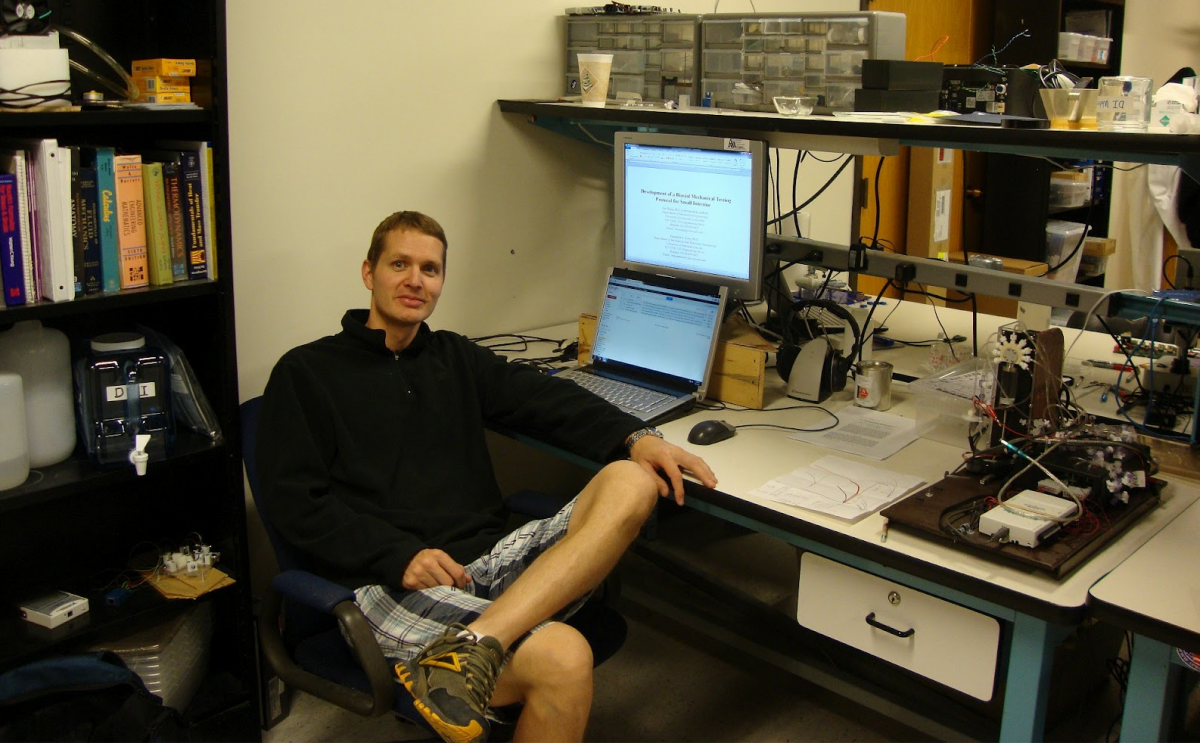
Dr. Terry’s years in private industry contribute to his interest in a broad spectrum of biomedical research including:
- Medical therapeutics, devices, and surgical tools. One factor influencing health care costs is the high price of medical devices and equipment. Although the price of these devices is derived from many non-engineering related factors, design plays a significant role in device cost. One of Dr. Terry’s medical device research objectives is to achieve order-of-magnitude reduction in cost, complexity, and/or size of medical devices while maintaining effectiveness. Such design improvements not only benefit American consumers, but they also increase the access of high-quality care to communities with developing economies.
- Swallowables/dissappearables. In the past, continuous biometric monitoring for real-time health diagnosis was used primarily by astronauts, warfighters, and other individuals in high-risk or mission-critical occupations. Our aim is to leverage recent advances in sensing, wireless telemetry, battery power, body networks, and wearable and handheld computing by creating a new class of biosensing systems that are intuitive, non-invasive, long-term, and ambulatory. Everyone can benefit from personal real-time biometrics, and such systems can help make biosensing commonplace. Once intuitive, noninvasive, and long-term sensing is established, future avenues of research will include the development of expert systems that diagnose and provide feedback to the host or to in vivo actuators.
- Biomechanical behavior of tissues and organs. The above research areas benefit from fundamental knowledge of the biomechanical behavior of the tissue and organs that interact with surgical tools, devices, or sensors. This is especially true for long-term implants. Therefore, a third research interest is the biomechanical characterization of both the active and passive response of tissue and organs to engineering materials. Presently, we are creating a novel sensor for measuring in situ the biomechanical response of the live small intestine to a solid bolus.